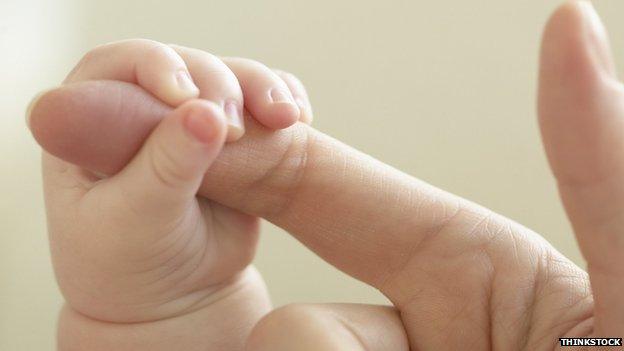Small Data: When the average age of death was zero
- Published

In 1964, the "mode age" of death in England and Wales was zero, writes Anthony Reuben.
I don't often use the "mode" as a measure of the average - it's the number that appears the most often, so in this case what it means is that more people died at the age of zero than at any other age.
The measure of the average that is used most often is the "mean", and in 1964 the mean age of death was 65.
But in this case the mode tells us a lot about infant mortality. It would have been no great surprise that the mode was zero - it had been the same for most years before then since records began.
But it has not been the case in the 50 years since, which is a tribute to the extraordinary advances that have been made in healthcare, midwifery and neonatal intensive care, according to last week's publication, external from the Office for National Statistics (ONS).
The ONS also says that in 1900, slightly fewer than one in six babies died in their first year of life. Last year, that number was one in 252. And the mode age of death was not zero, it was 87.
Such advances have not been confined to England and Wales, indeed, some recent research suggested that the UK is now lagging behind the rest of Western Europe. That report cited poverty and smoking in pregnancy as possible reasons why the infant mortality rate has not fallen even further.
According to a report from Unicef, external, even in the least developed countries, the number of deaths in the first year has gone down from one in nine in 1990 to one in 17 in 2012.
It's still disturbingly high, but the improvement has been startling.
Subscribe to the BBC News Magazine's email newsletter to get articles sent to your inbox.